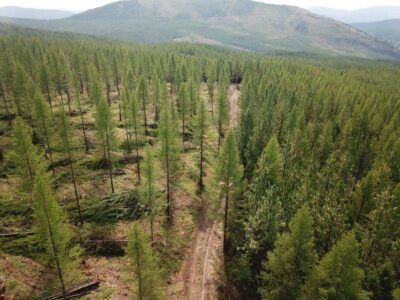BART Turns 40: Some History Lessons

BART, the Bay Area Rapid Transit system, turns 40-years-old today, with the unfortunate anniversary of 9/11. Some historical and financial tidbits:
- The original system was supposed to serve Marin and San Mateo Counties, along with San Francisco, Alameda, and Contra Costa Counties. According to Stephen Zwerling, San Mateo dropped out due to concern that neighboring Santa Clara County, which was not paying into the system, would take advantage of the San Mateo stops. County leaders also felt that the BART taxes would be too high and the benefits from the stations too insignificant. As a result of the loss of the San Mateo revenue base, rural Marin County had to drop out because the system no longer had the regional funds to serve that county across the Golden Gate.
- The City of Berkeley did not want the trains running above the street due to noise and visual impacts (as anyone who’s tried to sleep near an above-ground BART line can attest). However, Berkeley had little legal leverage to demand an underground line from BART, so the city voters approved a 1966 bond to pay to underground it themselves. That’s why the Ashby, Downtown Berkeley, and North Berkeley stations are underground. By contrast, in places like Los Angeles today, small cities are able to force regional transit agencies to pay for local improvements, like Compton using a lawsuit to get an aerial station on the Blue Line and activists in Crenshaw using the California Public Utilities Commission process to slow down and raise the Expo Line to Culver City. But the Berkeley example seems more fair: if you want local improvements, pay for it yourself.
- As documented by Mel Webber in 1976, BART’s capital costs (i.e. the cost to build the system) were 150% more than its leaders had publicly expected by that year, the operating costs were 475% greater, while ridership was only 50% of what they hoped. Certainly ridership has grown since 1976, but so has the system and its costs.
- BART’s per passenger subsidy tops out at over $6 per ride.
Today BART is an institution in the Bay Area, with many people (including me) relying on it for travel to work, airports, shopping, and recreation. But despite the BART love, was it worth building? Could there have been more convenient and cheaper alternatives? And now that we have it, how can we improve the system?
If you ask the critics, many bus advocates think that BART and CalTrain have cannibalized bus service for lower-income, transit-dependents. Most transportation academics would have preferred a cheaper system of high-speed buses on separate rights-of-way. And smart growth advocates would like to see more station area development, which has been stymied in many BART neighborhoods by local activists who don’t want more people, traffic, and parking challenges.
I hope BART will address some of these criticisms over the next 40 years by taking three main steps. First, BART should increase service in the urban core (San Francisco, Oakland, and Berkeley) with more frequent trains to maximize ridership in these densely populated areas. Second, BART should decrease service to outlying areas that don’t need expensive heavy-rail trains for suburban commuters. Third, BART should force local governments to lift the development restrictions around the station areas or face reduced service.
BART will probably never make enough money to pay for itself, which is okay given its role as a social service for moving transit dependents and the environmental (and quality of life) benefits it can bring by moving people via electricity rather than oil. But these three changes would improve revenues, reduce costs, increase ridership, and help the Bay Area take better advantage of its now 40-year-old investment.
Reader Comments
12 Replies to “BART Turns 40: Some History Lessons”
Comments are closed.








Hi, Ethan.
1. Can BART legally or practically deny service to jurisdictions on the basis of their development policies? Since lines run through multiple jurisdictions, each of which might have different attitudes towards development, this would seem to require a train skipping stops along a line, which is a bit hard to imagine and inconvenient for riders.
2. Also, why do you see outlying areas don’t “need” heavy-rail lines? Because they have better transit options? Or because they can just drive?
Hi, Ethan.
1. Can BART legally or practically deny service to jurisdictions on the basis of their development policies? Since lines run through multiple jurisdictions, each of which might have different attitudes towards development, this would seem to require a train skipping stops along a line, which is a bit hard to imagine and inconvenient for riders.
2. Also, why do you see outlying areas don’t “need” heavy-rail lines? Because they have better transit options? Or because they can just drive?
I’m not sure if BART or the MTC already has that authority, but if they don’t, they should seek legislation to get it. I know the MTC can deny rail funds to local jurisdictions for new rail lines if they don’t upgrade their land use policies (see MTC Resolution 3434 at http://www.mtc.ca.gov/planning/smart_growth/tod/TOD_policy.pdf). The MTC should extend this policy to local governments with existing station areas. To some extent, SB 375 in California allows for transportation funds to be prioritized depending on land use policies, so BART may be able to use that legislation as a hook. As for the politics, it’s a hard road but necessary if we want to motivate local action on land use policies. As for skipping stations, what is inconvenient for low-density communities would speed up the rides for everyone else.
Outlying areas should use much less expensive means of transit than a rail system built for Tokyo-style densities. These areas should use commuter buses and vans that are better for fanning out across low-density suburbs and that can then bring passengers to employment centers and/or urban core BART stations. Otherwise, they’re foisting tremendous costs on the rest of the region by traveling in the most inefficient way possible, all while making the system worse for urban core riders.
I’m not sure if BART or the MTC already has that authority, but if they don’t, they should seek legislation to get it. I know the MTC can deny rail funds to local jurisdictions for new rail lines if they don’t upgrade their land use policies (see MTC Resolution 3434 at http://www.mtc.ca.gov/planning/smart_growth/tod/TOD_policy.pdf). The MTC should extend this policy to local governments with existing station areas. To some extent, SB 375 in California allows for transportation funds to be prioritized depending on land use policies, so BART may be able to use that legislation as a hook. As for the politics, it’s a hard road but necessary if we want to motivate local action on land use policies. As for skipping stations, what is inconvenient for low-density communities would speed up the rides for everyone else.
Outlying areas should use much less expensive means of transit than a rail system built for Tokyo-style densities. These areas should use commuter buses and vans that are better for fanning out across low-density suburbs and that can then bring passengers to employment centers and/or urban core BART stations. Otherwise, they’re foisting tremendous costs on the rest of the region by traveling in the most inefficient way possible, all while making the system worse for urban core riders.
There is a fundamental constraint that prevents BART from increasing service in service in the urban core, particularly San Francisco. There’s only one Transbay Tube, and it’s already at full capacity during rush hours (when there is the highest demand). They can’t run more trains and they can’t run longer trains with the system they have. Of course, you could dig another Tube — which people have talked about for some time. But it would be pretty darn expensive!
There is a fundamental constraint that prevents BART from increasing service in service in the urban core, particularly San Francisco. There’s only one Transbay Tube, and it’s already at full capacity during rush hours (when there is the highest demand). They can’t run more trains and they can’t run longer trains with the system they have. Of course, you could dig another Tube — which people have talked about for some time. But it would be pretty darn expensive!
It’s true that we need another Tube in the coming decades. However, there are some short-term, lower-cost solutions available, such as building new tracks south of Market to relieve the bottleneck at the Embarcadero Station. In the next 40 years, BART should concentrate on new capital projects in the urban core, like a second Tube, over expansion to outlying areas that can be better served by cheaper, more flexible forms of transit. SPUR has a video on Bay-crossing options here: http://www.spur.org/blog/2011-08-16/how-will-17-million-more-people-cross-sf-bay Discussion of a spur line south of Market here: http://switchingmodes.com/proposals/bart-capacity-tbt/
It’s true that we need another Tube in the coming decades. However, there are some short-term, lower-cost solutions available, such as building new tracks south of Market to relieve the bottleneck at the Embarcadero Station. In the next 40 years, BART should concentrate on new capital projects in the urban core, like a second Tube, over expansion to outlying areas that can be better served by cheaper, more flexible forms of transit. SPUR has a video on Bay-crossing options here: http://www.spur.org/blog/2011-08-16/how-will-17-million-more-people-cross-sf-bay Discussion of a spur line south of Market here: http://switchingmodes.com/proposals/bart-capacity-tbt/
While a second downtown line may be lower-cost than a second Tube, it’s still not cheap at all. (See the cost for the Central Subway to Chinatown being built right now.) I would say that more investment in rapid bus transit (particularly in San Francisco) would provide a much bigger bang for the buck.
While a second downtown line may be lower-cost than a second Tube, it’s still not cheap at all. (See the cost for the Central Subway to Chinatown being built right now.) I would say that more investment in rapid bus transit (particularly in San Francisco) would provide a much bigger bang for the buck.
When did San Mateo County decide to participate and fund BART? What convinced them to change? Are there any plans to extend BART to San José?
When did San Mateo County decide to participate and fund BART? What convinced them to change? Are there any plans to extend BART to San José?